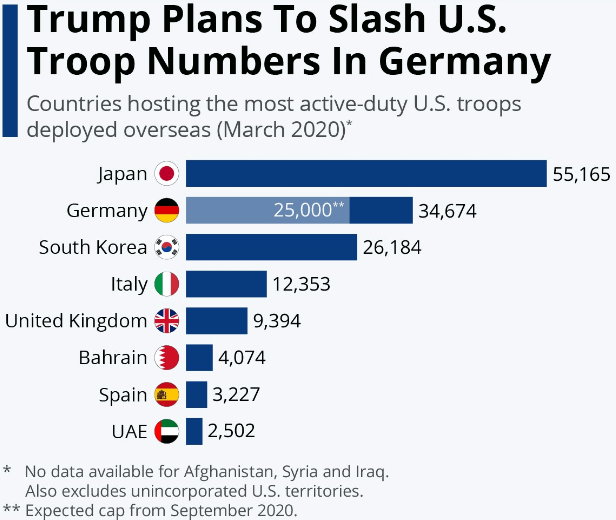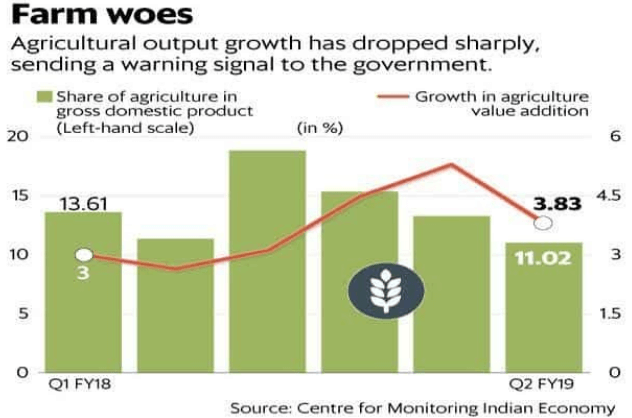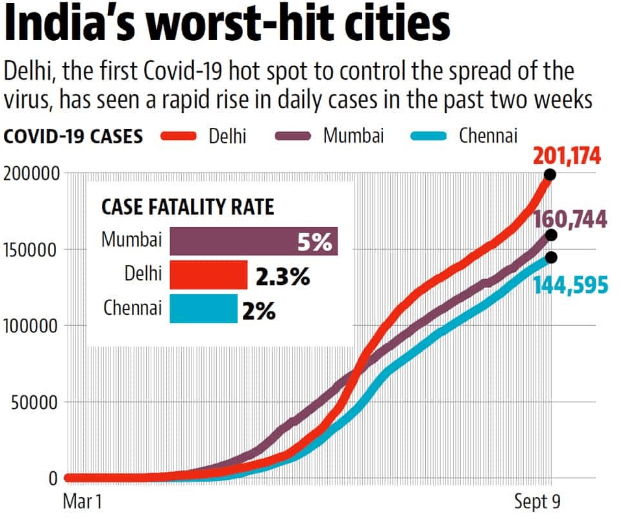The Hindu Editorial Analysis- 11th Sept, 2020 | Additional Study Material for UPSC PDF Download

1. DRAWDOWN IN IRAQ: ON U.S. TROOP REDUCTION-
GS 2- Effect of policies and politics of developed and developing countries on India’s interests, Indian diaspora
Context
The U.S.’s decision to cut troops in Iraq is both a relief and a challenge to the Iraqi government.

Withdrawl
(i) It is a relief because public opinion in Iraq is increasingly against the continuing presence of U.S. troops in the country, particularly after the assassination of Iranian General Qassem Soleimani in Baghdad in January.
(ii) Iraqi lawmakers passed a non-binding resolution after the assassination, asking the government to oust the Americans.
(iii) The new government of Prime Minister Mustafa al-Kadhimi has stated that it does not want U.S. troops in combat operations.
(iv) But he has asked for training services and other assistance.
(v) Now that the U.S. is cutting troops from 5,200 to 3,000, Mr. Kadhimi could argue that his government is committed to seeing the full withdrawal of the U.S. troops.
(vi) It is a challenge because the U.S. troops had played a key role in the war against the Islamic State (IS), and with the drawdown, the Iraqi forces would have to share a greater burden in the fight against jihadists.
(vii) The American political leadership has long wanted to pull troops out of Iraq.
(viii) President Barack Obama had set a timetable for the pull back and withdrew most troops by 2011, but he had to send thousands of soldiers back to Iraq after the rise of the IS.
(ix) President Trump promised to end the “endless wars” during his campaign.
(x) Now that the IS has been driven out of the major population centres of Iraq, he could claim victory and draw down troops.
Local Factors
(i) While the U.S.’s decision is part of the Trump administration’s larger policy of bringing back American troops home, the local factors cannot be overlooked.
(ii) The U.S. found it increasingly difficult to station a large number of troops in Iraq.
(iii) At the height of the war, the U.S. had over 1,50,000 troops in Iraq. But in recent years, it found stationing even 10,000 troops risky.
(iv) This is partly because of the hostile(risky) political environment and partly due to the growing influence of Iran and Shia militias in Iraq.
(v) In January, the U.S. killed Soleimani after Shia militias attacked American troops.
(vi) Iran retaliated by launching ballistic missile attacks on a U.S. air base in Iraq, injuring some 100 American soldiers, while the Shia militias continued attacking U.S. troops.
(vii) In March, three of the coalition troops, two of them Americans, were killed in such an attack.
(viii) Since then, the U.S. has repositioned troops, and the drawdown will reduce risks of such confrontations in the future.
(ix) While the Americans leave, the Iraqi government should be careful of not letting any security vacuum being filled by jihadist groups.
(x) Though the IS has been driven underground, at least 10,000 IS fighters are still active in Iraq, according to UN assessments.
(xi) The sectarian policies of the Nouri Al-Maliki government, coupled with the security vacuum left by the U.S. withdrawal in 2011, allowed Al-Qaeda in Iraq.
(xii) The Iraqi government should not allow history to repeat itself.
Conclusion
Jihadist groups should not be allowed to fill security vacuum(gap) after American troops leave.
2. AN AGRICULTURE-LED REVIVAL AS FLAWED CLAIM-
GS 3- Issues related to direct and indirect farm subsidies and minimum support prices; Public Distribution System objectives, functioning, limitations, revamping; issues of buffer stocks and food security
Context
A rather confident statement heard in the midst of India’s COVID-19-induced economic slowdown is this: “Agriculture will lead India’s economic revival”.
But how valid is this claim put forward by government spokespersons and some observers?

Arguments
(i) Four major arguments are offered. First, India’s food grain production in 2019-20 was 3.7% higher than in 2018-19.
(ii) The procurement(purchase) of rabi wheat in 2020-21 was 12.6% higher than in 2019-20. These indicate, it is argued, resilience(flexibility) in the agricultural sector.
(iii) Second, food inflation in the Q1 of 2020-21, at 9.2%, was higher than in the previous year due to “sustained demand for food”. This shows a shift of terms of trade in favour of agriculture.
(iv) Third, the area under kharif sowing in 2020-21 was 14% higher than in 2019-20.
(v) Higher kharif sowing was accompanied by higher tractor and fertilizer sales, which bodes well for economic recovery.
(vi) Fourth, the government’s economic package for agriculture — as part of the ₹20-lakh crore Atmanirbhar Bharat package — will further position agriculture as the engine of revival.
(vii) Let us now consider each of the above claims.

Rabi Procurement
(i) During the lockdown, State governments in many northern States put in considerable efforts to ensure that procurement did not suffer.
(ii) As a result, procurement of rabi wheat was higher in 2020-21. However, this claim hides more than it reveals.
(iii) As per official data, only 13.5% of paddy farmers and 16.2% of wheat farmers in India sell their harvest to a procurement agency at an assured Minimum Support Price (MSP).
(iv) The rest sell their output to private traders at prices lower than MSP.
(v) One should, then, be looking not at procurement but market arrivals.
(vi) I compared total market arrivals of 15 major crops in India between March 15 and June 30 in 2019 and 2020. The market arrivals of all the 15 crops were lower in 2020 than in 2019.
(vii) It was only in paddy, lentil, tomato and banana that market arrivals in 2020 constituted more than 75% of market arrivals in 2019.
(viii) In wheat, barley, potato, cauliflower, cabbage and lady’s finger, market arrivals in 2020 were between 50% and 75% of market arrivals in 2019.
(ix) For gram, pigeon pea, onion, peas and mango, market arrivals in 2020 were less than half of market arrivals in 2019.
(x) In wheat, the most important rabi crop, only 61.6% of the arrivals in 2019 was recorded in 2020.
(xi) Thus, the most important problem faced by farmers during the lockdown was the loss of markets, stemming from the disruption in supply chains, closure of mandis and a fall in consumer food demand.
(xii) Farmers suffered major loss of incomes, and higher procurement was hardly alleviating(reducing pain).
(xiii) In addition, there were major losses in the milk, meat and poultry sectors; industry associations estimate the total loss for the poultry industry at ₹25,000 crore.
Inflation And Prices
(i) Inflation rates estimated using consumer price indices are not representative of farmer’s prices.
(ii) Inflation was largely due to disruptions in supply chains and rise in trader margins.
(iii) Wholesale market prices for 15 agricultural commodities between March 15 and June 30, 2020 were examined.
(iv) Prices of most crops declined. For example, average paddy prices were about ₹1,730 per quintal on March 23, but ₹1,691 per quintal on June 30.
(v) Average wheat prices were ₹2,045 per quintal on April 1, but ₹1,865 per quintal on June 30.
(vi) A moderate uptick in prices was visible in a few vegetables, but not before June 2020.
(vii) The dark side of higher rural inflation in India is that small and marginal farmers are not net sellers, but net buyers of food.
(viii) So, it was not just that farmer’s prices fell; most were also forced to pay more for food purchases.
(ix) There is also strong evidence from small sample surveys that rural households reduced food purchases during the lockdown.
(x) Thus, the claims that higher rural inflation benefited farmers, and that it was due to higher food demand, are misplaced.
Higher Kharif Sowing
(i) There is no surprise in the growth of kharif sowings in 2020. Given that rabi incomes fell during the lockdown, many rural households may have returned to farming or intensified farming for food- and income-security.
(ii) Lakhs of migrant workers returned to their villages from urban areas.
(iii) They may have taken up agriculture in previously fallow or uncultivated lands.
(iv) Data on monthly employment released by the Centre for Monitoring Indian Economy show that the number of persons employed as “farmers” in June and July 2019 were 11.2 crore and 11.4 crore, respectively.
(v) But in June and July 2020, these numbers rose to 13 crore and 12.6 crore, respectively.
(vi) These are indicators of distress, not prosperity. It is no cause for celebration also because the rural unemployment rates rose sharply in 2020, to 22.8% (April), 21.1% (May) and 9.5% (June).
(vii) Even in August 2020, rural unemployment rates were higher than in February 2020 or August 2019.
Trickle From Package
(i) Agriculture contributes only about 15% to India’s Gross Value Added (GVA).
(ii) Thus, even if agriculture grows by 4%, it is likely to contribute only 0.6 percentage points to GVA growth.
(iii) To contribute a full one percentage point to GVA growth, agriculture will have to grow by 6%, which is unlikely in 2020-21.
(iv) This is not to deny a potential rise in demand from higher rabi procurement, higher kharif sowing and flow of cheap credit, which together appear to have resulted in higher purchase of tractors and fertilizers.
(v) But the counteracting tendencies in rural areas — i.e., lower crop prices, lower market arrivals and higher unemployment — would overwhelm these “green shoots”.
(vi) Rural expectations were high when the Atmanirbhar Bharat package was announced. However, the details were disappointing.
(vii) Total fresh spending for agriculture in the package is a trickle: less than ₹5,000 crore.
(viii) The rest are schemes already included in the past Budgets, announcements with no financial outgo or liquidity/loan measures routed through banks.
(ix) The package also failed to provide financial support to farmers. PM-KISAN, or Pradhan Mantri Kisan Samman Nidhi, is hardly an ideal scheme.
(x) But instead of frontloading the instalments of PM-KISAN, the government should have doubled the payments to farmers from ₹6,000 a year to ₹12,000 a year.
(xi) Instead of raising the minimum support price (MSP) for kharif paddy by ₹53 per quintal (which, actually, was the lowest rise in over a decade), or cotton by ₹260 per quintal, the government should have set all MSPs at 150% of the C2 cost (comprehensive cost) of production.
(xii) Instead of a moratorium on loan repayments, the government should have waived(cancelled) the interest on loans taken by farmers in 2019 and 2020.
(xiii) Instead of vague loan-based schemes in animal husbandry, the government should have announced a package of direct assistance for the crisis-ridden poultry and meat sectors amounting to at least ₹20,000 crore.
(xiv) Instead of loan-based schemes to support private investment in dairy, the government should have arranged direct financial assistance to small milk producers, for whom milk prices have literally plummeted.
Conclusion
(i) In all, the government’s strategy appears to be to squeeze farmers without investing in agriculture or rural employment.
(ii) Such an approach would not just fail; it would also be counterproductive.
(iii) Rural incomes will remain depressed, and push the economy further into a vicious cycle of poor demand, low prices and low growth.
(iv) The government should discard its role as a passive observer, and decisively intervene in rural India with a substantial fiscal stimulus.
(v) The earlier the better as delays would only compound(make more difficult) mistakes.
3. THE DAILY DIFFICULTIES IN COLLECTING COVID-19 DATA-
GS 2- Important aspects of governance, transparency and accountability
Context
(i) Compiling data on the number of samples tested for COVID-19 and the total number of positive cases recorded till date in India is a complex process.
(ii) Data from Telangana and Tripura and the Indian Council of Medical Research’s daily bulletin are released only the next morning.
(iii) The data help us track the response of the States to the pandemic, and are used as part of the State tracker on COVID-19 on The Hindu’s website as well as to churn out data stories for print.
(iv) It was clear that testing was crucial in identifying and isolating those who were infected, to control the spread of the virus.
(v) Hence, it became necessary to track how States fared on the testing front. But this was not easy.

No Standard Format
(i) The initial struggle was to identify the online sources. States disseminated(shared) data in about different ways.
(ii) While most States today have a dedicated web portal for COVID-19 where bulletins are issued, is it frustrating that there is no standard format for publication of data.
(iii) There are differences in the details provided by the States too.
(iv) For example, when the Delhi government was questioned by the Delhi High Court for using very few RT-PCR tests and ramping up(increasing) rapid antigen detection tests, we decided to do a story.
(v) Our aim was to record the share of antigen tests across States to check whether they exceeded the number of RT-PCR tests.
(vi) We found that only some States published data on the different tests being conducted.
(vii) We had to contend with data from these States even though most have taken recourse(help) to rapid antigen testing lately.
District Wise Data
(i) While ICMR publishes only bare-bones(essential part) information on testing, the Union Health Ministry’s data publications too leave a lot to be desired.
(ii) The Health Ministry website had district-wise data on cases and deaths. However, the data was in a state of disarray.
(iii) There was no time stamp on the data. Nor were the numbers archived, which meant we had to use Internet archival tools to access the previous day’s data.
(iv) We also found data with errors (different district spellings, States having cases not attributed to any district, etc.).
(v) District-wise data have now been removed from the Ministry website.
Conclusion
(i) If we are to tackle this pandemic effectively, information is the key. Administrations should strive to be transparent.
(ii) A standard set of guidelines which explain the kind of information given should govern bulletins which are published at the State level.
(iii) This is bound to benefit not just citizens but epidemiologists and health experts whose research will help us find the means to end this pandemic.
|
21 videos|562 docs|160 tests
|
FAQs on The Hindu Editorial Analysis- 11th Sept, 2020 - Additional Study Material for UPSC
| 1. What is the significance of The Hindu Editorial Analysis for UPSC preparation? |  |
| 2. How can The Hindu Editorial Analysis help in improving language skills for the UPSC exam? |  |
| 3. What kind of content does The Hindu Editorial Analysis cover? |  |
| 4. Can The Hindu Editorial Analysis be used as a sole source of current affairs preparation for the UPSC exam? |  |
| 5. How can one effectively utilize The Hindu Editorial Analysis for UPSC preparation? |  |
















